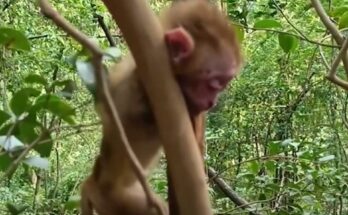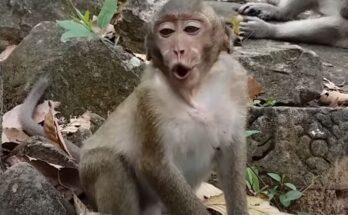The life of wild monkeys in the wilderness is fraught with harsh realities that are often hidden from the human eye. Despite their playful nature and social structures, these creatures face countless challenges in their daily struggle for survival. Whether in the dense jungles, tropical forests, or arid savannas, wild monkeys are constantly battling the elements, predators, and a lack of resources.
The primary concern for wild monkeys is the availability of food and water. Unlike animals in more controlled environments, they must rely on their instincts and knowledge of their habitats to find sustenance. A shortage of food, particularly during seasons of drought or in areas affected by deforestation, can lead to malnutrition and starvation. In many regions, human encroachment has destroyed their natural food sources, forcing monkeys to venture closer to human settlements where they face the threat of capture or violence.
Another significant issue is the constant threat from predators. Larger carnivores such as big cats, snakes, and birds of prey pose a constant danger to young and even adult monkeys. In the absence of protection, the fear of being attacked is ever-present, leading to high levels of stress and anxiety in their communities. Furthermore, the loss of habitat due to deforestation and illegal logging makes it even more difficult for these animals to find safe spaces to live and raise their young.
Socially, wild monkeys experience challenges too. Dominance hierarchies, conflicts over food, and mating rights often lead to physical confrontations, leaving some injured or even abandoned. The survival of the fittest often prevails, and weaker members of the troop may face abandonment or death.
In summary, the life of wild monkeys is a constant struggle against the unforgiving forces of nature and human-induced threats. While they are resilient and adaptable, their harsh reality remains a sobering reminder of the fragility of life in the wild.


